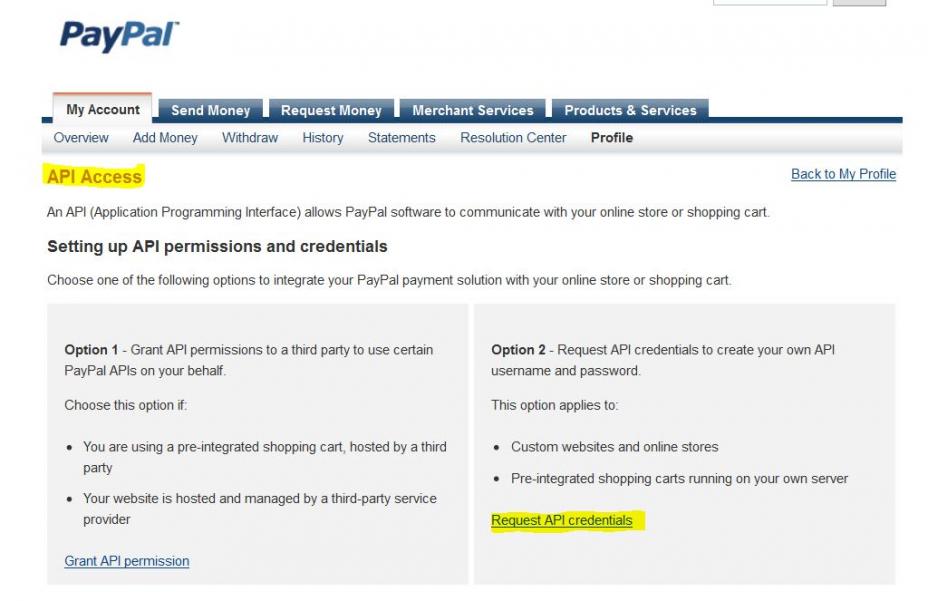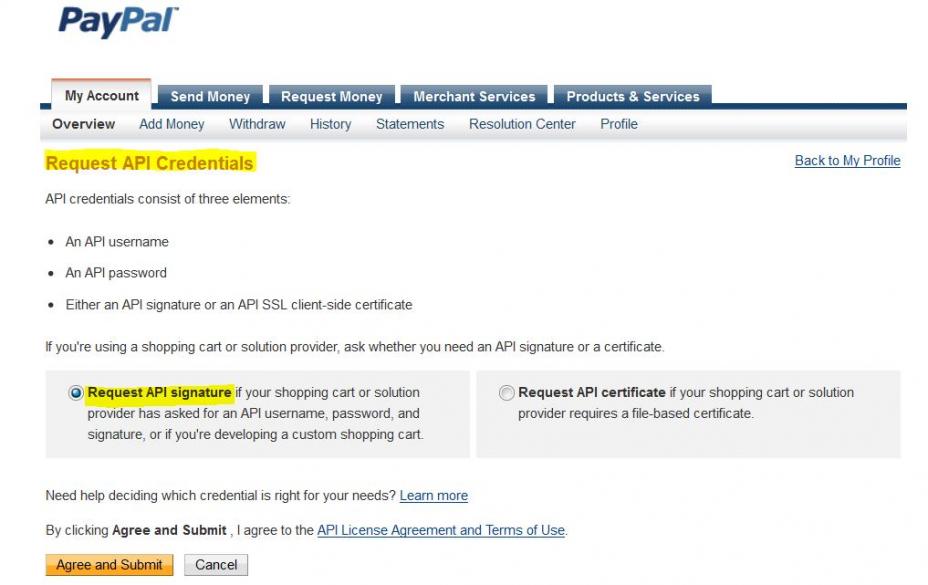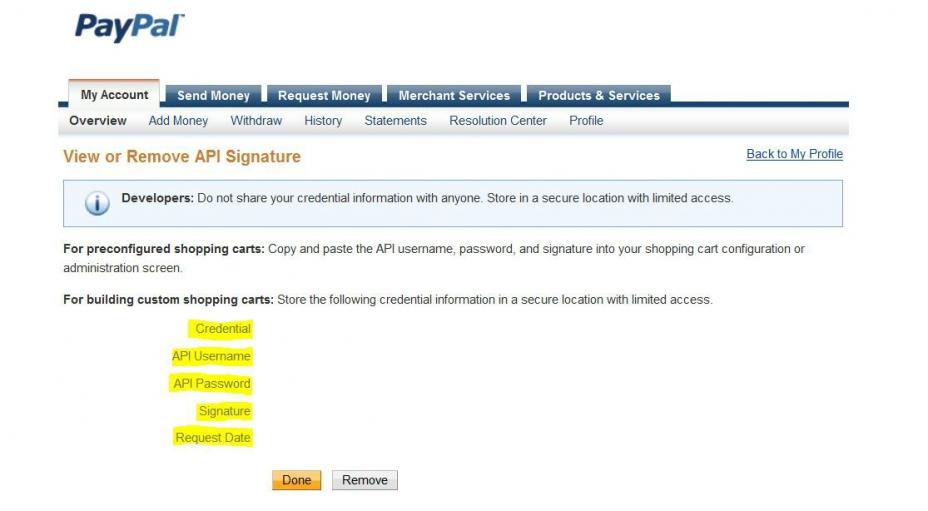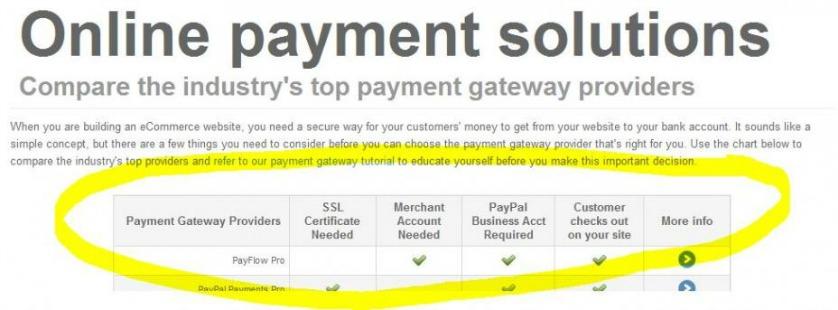In this tutorial, you will learn about online payment solutions including seamless checkout, remote checkout, and various PayPal checkout options. In addition, this tutorial will help you determine when it's necessary for you to purchase an SSL certificate and set up a merchant account. Comparisons and contact information of payment gateway providers, SSL certificate providers, and merchant account providers are also included. At the end of this tutorial, you will find a linked index to the complete eCommerce series including hosting provider solutions and online shipping solutions.
It is worthwhile to note that we recommend a seamless checkout because of the power and control it offers vs a remote checkout experience. In the past, the main advantage to choosing a remote checkout was to avoid the complexity of coding. This no longer needs to be a consideration since eCart already contains the necessary code required for you to add a seamless checkout to your website.
For anyone wanting to accept online payments:
eCart is not required to learn from this tutorial. This tutorial will help anyone learn about online payment solutions, including:
Highly recommended for eCart users:
Following this tutorial will prepare you to set up the accounts you need to take online payments. Once your accounts are set up, you will be ready to complete the eCart checkout wizard.
What is eCart:
If you are building an eCommerce site, eCart can save you the time and frustration spent creating the most complex part of your website. eCart will guide you through building a custom shopping cart and checkout system to sell physical goods, digital goods, services, and to accept donations.
Learn more about eCart.
Seamless checkout:
Although the set-up is more involved, a seamless checkout experience is indicated for your website if you do not wish for customers to leave your site when completing a purchase transaction. Additionally, it allows you to control the look-and-feel of the checkout. It can also be argued that accepting payments locally lends greater authority to your site.
To provide a full-featured and seamless checkout, you will need:
Remote checkout:
As an alternative to installing SSl on your website, you can link directly to your payment provider and perform checkout on their website. Remote checkout is the simplest method for accepting credit card information from your online buyers. After pressing submit, your customers actually go to your payment provider's website (who has SSL) to fill out the credit card information. Afterward, they are returned back to your website.
Remote checkout saves you the trouble of installing SSL on your website. Because you are not asking anyone to fill out credit card information, you can avoid paying the annual fee for an SSL certificate and the hassle of updating links.
The first provider you need for a seamless checkout experience is an SSL certificate provider. Necessary to the safety and security required in online seamless checkout, installing SSL allows you to use https instead of http to protect customer data. With https, any information submitted through a form is encrypted. Otherwise, credit card information bounces from server to server through the web and hypothetically, can be read by anyone.
Annual SSL certificates can be purchased through your hosting provider or through WebAssist. If you need to use the SSL certificate on more than one website or provide more stringent security features, the cost typically increases.
To compare SSL certificate providers and buy an SSL certificate, go to SSL Certificates: Secure your website and customer data.
The second provider necessary to seamless checkout is a payment gateway provider. Payment gateways enable internet merchants to accept online payments via credit card, debit card, and e-check. A merchant account and an SSL certificate is required for all of these payment providers with the exception of PayPal Payments Pro which does not need a merchant account. (Also see Seamless PayPal options section.)
With any payment gateway option, we suggest that you also offer Express Checkout, PayPal's basic remote checkout. (See more in Remote PayPal options section.) You may be wondering why you would want to include PayPal payment buttons, even if you are signed up with Payflow Pro, Authorize.Net, and have your own merchant account. One reason is that PayPal's Express Checkout offers a quick and free sign up process with no monthly fees. But the biggest reason is that you can continue to serve customers who might not want to use a credit card or checking account.
The third provider required for seamless checkout is a merchant account provider. A merchant account is a specific type of bank account that processes credit card payments, allowing you to accept them online through your payment gateway provider. If you already have a relationship with a merchant account provider, you can usually designate that account when you sign up for service with a payment gateway provider.
You can sometimes get a merchant account through your local bank. However, many local banks do not offer these specialty accounts. Even if yours does, you will also want to read the options provided by e-onlinedata and E-Commerce Exchange as an alternative to a local bank provider.
Benefits of e-onlinedata:
Read more about e-onlinedata and sign up for their services.
Benefits of E-Commerce Exchange:
Read more about E-Commerce Exchange and sign up for their services.
You can have a seamless checkout experience by using one of these PayPal options.
The difference between PayPal Payments Pro and Payflow Pro is whether you are using PayPal as your bank or interacting directly with your bank. If you do not have a merchant account, you can use PayPal Payments Pro and use PayPal as your bank, with payments going directly into your PayPal account. With Payflow Pro, payment goes directly into your merchant account.
PayPal Advanced combines both seamless and remote checkout. While you are required to have a merchant account and an SSL certificate, PayPal Advanced eliminates the involved process of your site becoming PCI (Payment Card Industry) compliant and gives your customer a secure checkout experience.
The seamless checkout experience is actually done on the PayPal site, using their SSL certificate. Although remote, it appears that the checkout is completed on your website due to an iframe technology. The drawback is the lack of control in the look-and-feel of the PayPal button and associated message because a piece of PayPal's website is in an iframe on your page. But PayPal Advanced is more affordable than the seamless PayPal options discussed in the previous section.
Some seamless checkout providers also offer remote checkout options, meaning the customer checks out on the provider's website, not your website. An SSL certificate is not needed. However, a merchant account is still necessary. (Also see Remote PayPal options section.)
Using any of PayPal's remote checkout solutions, you can receive your customers' payments from their PayPal balance, debit card, credit card, or bank account.
To integrate any of the PayPal payment options with your website, you can request your API Credentials.





Follow this link to compare the industry's top payment gateway providers in a user friendly chart.

Once you've determined your online payment solutions, learn how eCart can assist you with building your eCommerce website. Saving you countless hours, eCart guides you through the steps of building a custom shopping cart and checkout system to sell your physical goods, digital goods, services, and even accept donations. Learn more about eCart.
With eCart technology as the cornerstone of the WebAssist eCommerce series, these in-depth tutorials will walk you through the steps of building an eCommerce site: product catalogs, shopping carts, product options (both static and dynamic), and checkout including payments. Completing the eCart portion of the series is help for setting up a back-end administration to manage your eCommerce business. Additionally, to be used with or without eCart, you will learn about payment gateway providers, hosting solutions, and online shipping accounts.
Comments will be sent to the author of this tutorial and may not be answered immediately. For general help from WebAssist, please visit technical support.
Sign in to add commentsYour friends over here at WebAssist! These Dreamweaver extensions will assist you in building unlimited, custom websites.
These out-of-the-box solutions provide you proven, tested applications that can be up and running now. Build a store, a gallery, or a web-based email solution.
Monica: 11 Years, 8 Months, 2 Weeks, 5 Days, 3 Hours, 51 Minutes ago
What did I buy for 799 and when does it get here and fr who
: 9 Years, 2 Months, 3 Weeks, 3 Days, 1 Hour, 33 Minutes ago
Payolee is a good option. http://www.payolee.com/
: 7 Years, 7 Months, 3 Weeks, 20 Hours, 59 Minutes ago
Another payment solution that can be considered is debit order collections. That way you can make sure you get paid automatically when payment is due which gives you more control over your cashflow https://mygate.co.za/payment-solutions/collections/
: 7 Years, 4 Months, 3 Weeks, 5 Days, 22 Hours ago
Hello,
Thank you. This is a very great help.
FYI: this page is not accessible from the parent page http://www.webassist.com/tutorials/eCommerce-Overview---eCommerce-Series-
Best,
Nas
: 6 Years, 4 Months, 1 Week, 3 Days, 22 Hours, 39 Minutes ago
Kate Ford, you are doing good work thank you to share about to <a href="https://uaewebsitedevelopment.com/payment-gateway-integration-services//>Payment Gateway Services</a>
this post.